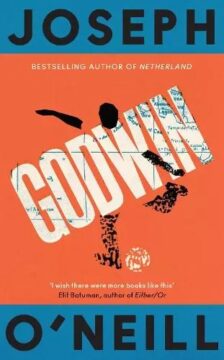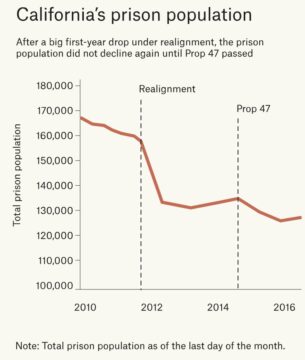Theme for English B
Go home and write
a page tonight.
And let that page come out of you—
Then, it will be true.
I wonder if it’s that simple?
I am twenty-two, colored, born in Winston-Salem.
I went to school there, then Durham, then here
to this college on the hill above Harlem.
I am the only colored student in my class.
The steps from the hill lead down into Harlem,
through a park, then I cross St. Nicholas,
Eighth Avenue, Seventh, and I come to the Y,
the Harlem Branch Y, where I take the elevator
up to my room, sit down, and write this page:
It’s not easy to know what is true for you or me
at twenty-two, my age. But I guess I’m what
I feel and see and hear, Harlem, I hear you:
hear you, hear me—we two—you, me, talk on this page.
(I hear New York, too.) Me—who?
Well, I like to eat, sleep, drink, and be in love.
I like to work, read, learn, and understand life.
I like a pipe for a Christmas present,
or records—Bessie, bop, or Bach.
I guess being colored doesn’t make me not like
the same things other folks like who are other races.
So will my page be colored that I write?
Being me, it will not be white.
But it will be
a part of you, instructor.
You are white—
yet a part of me, as I am a part of you.
That’s American.
Sometimes perhaps you don’t want to be a part of me.
Nor do I often want to be a part of you.
But we are, that’s true!
As I learn from you,
I guess you learn from me—
although you’re older—and white—
and somewhat more free.
This is my page for English B.
by Langston Hughes
from The Collected Poems of Langston Hughes
Knopf and Vintage Books, 1994

 The week after taking office in 2017, Donald Trump announced his administration’s signature policy on the administrative state—the constellation of agencies, institutions, and procedures that Congress has created to help the president implement the laws it passes—when he
The week after taking office in 2017, Donald Trump announced his administration’s signature policy on the administrative state—the constellation of agencies, institutions, and procedures that Congress has created to help the president implement the laws it passes—when he  Before the automobile, cities were powered by horses. These urban equines ferried passengers in streetcars and carriages; they pulled fire engines and ambulances. They delivered everything from milk and ice to mail. They hauled the coal for locomotive and steam engines.
Before the automobile, cities were powered by horses. These urban equines ferried passengers in streetcars and carriages; they pulled fire engines and ambulances. They delivered everything from milk and ice to mail. They hauled the coal for locomotive and steam engines. I
I What kind of world is this? That’s the question prompted over and over by Joseph O’Neill’s new novel
What kind of world is this? That’s the question prompted over and over by Joseph O’Neill’s new novel  Amongst the many energy-hungry technologies supporting modern society, artificial intelligence (AI) is emerging as a major driver of energy demand. Data centers—the physical infrastructure enabling AI—are becoming larger, multiplying, and consuming more energy. Environmental organizations such as Greenpeace are
Amongst the many energy-hungry technologies supporting modern society, artificial intelligence (AI) is emerging as a major driver of energy demand. Data centers—the physical infrastructure enabling AI—are becoming larger, multiplying, and consuming more energy. Environmental organizations such as Greenpeace are  When Henderson got to Yale on the G.I. Bill, he was shocked by the differences between him and his classmates. As he explains in the video above, he learned it was popular for his classmates to hold strong, seemingly progressive views about many of the concerns that shaped his life — drugs, marriage, crime. But they were largely insulated from the consequences of their views. Henderson found that these ideas came to serve as status symbols for the privileged while they, ironically, kept the working class down. He came to call these ideas luxury beliefs.
When Henderson got to Yale on the G.I. Bill, he was shocked by the differences between him and his classmates. As he explains in the video above, he learned it was popular for his classmates to hold strong, seemingly progressive views about many of the concerns that shaped his life — drugs, marriage, crime. But they were largely insulated from the consequences of their views. Henderson found that these ideas came to serve as status symbols for the privileged while they, ironically, kept the working class down. He came to call these ideas luxury beliefs. Alice Munro, considered one of the greatest short-story writers of modern times, was a monster.
Alice Munro, considered one of the greatest short-story writers of modern times, was a monster. O
O D
D For centuries, physicists have exploited momentum conservation as a powerful means to analyze dynamical processes, from billiard-ball collisions to galaxy formation to subatomic particle creation in accelerators. David Moore and his research team at Yale University have now put this approach to work in a new setting: they used momentum conservation to determine when a radioactive atom emitted a single helium nucleus, known as an alpha particle (Fig.
For centuries, physicists have exploited momentum conservation as a powerful means to analyze dynamical processes, from billiard-ball collisions to galaxy formation to subatomic particle creation in accelerators. David Moore and his research team at Yale University have now put this approach to work in a new setting: they used momentum conservation to determine when a radioactive atom emitted a single helium nucleus, known as an alpha particle (Fig.  Asterisk: You’re responsible for managing one of the most comprehensive data sets of criminal outcomes for various criminal justice systems in California. It includes 12 counties and 60% of the state population. How did you put this resource together, and what kinds of outcomes you are tracking with it?
Asterisk: You’re responsible for managing one of the most comprehensive data sets of criminal outcomes for various criminal justice systems in California. It includes 12 counties and 60% of the state population. How did you put this resource together, and what kinds of outcomes you are tracking with it? In 1916 the Bank of England committed what Nikolaus Pevsner was to call the greatest architectural crime to befall London in the 20th century. It decided to demolish much of its own building, designed by the great Georgian neoclassical architect John Soane.
In 1916 the Bank of England committed what Nikolaus Pevsner was to call the greatest architectural crime to befall London in the 20th century. It decided to demolish much of its own building, designed by the great Georgian neoclassical architect John Soane. W
W